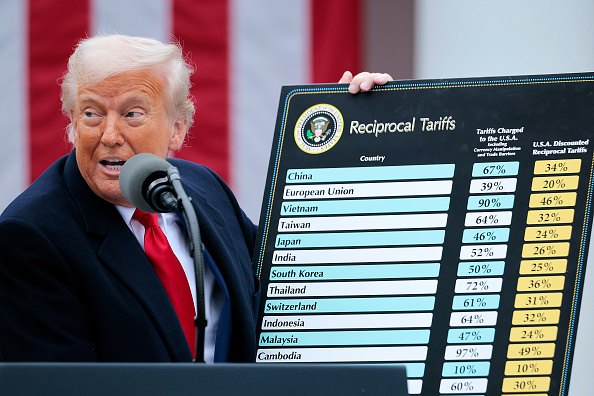Each year over the past decade, Clarivate has produced its Top 100 Global Innovators™ list – a view of the 100 organisations which sit at the very top of the global innovation ecosystem and the role of innovation data in business strategy.
As the nature of inventing in the 2020s changes, and the fact that there have never been so many ideas patented, this year saw the first change in how we calculate the list.
From the top-down view of qualifying organisations that we used in previous years, 2022 sees a shift to a bottom-up view of all 51 million inventions in our global invention data – each patented idea measured on normalised baselines and leaning on the sheer quantity of information published to create a much higher fidelity of performance comparison.
>See also: Ideation – how to nurture a habit for the new in your business
For innovators and founders, this process shines a light on the power of invention data when used as a business tool: a resource for planning, for alignment and for spotting disruption opportunity when it comes to global innovation.
The lesser-known role of patents
Most business professionals are aware of the power of a patent to provide ownership of a technical idea and the ability to exclude other organisations from using your research and technology. Similar to the registration of a company, it creates a legal life for the technology independent of ownership – it can be traded, licensed or even used as collateral.
But fewer are aware of the reason this otherwise extraordinary exclusionary power is offered by governments. Clearly, it rewards ingenuity by providing a route to a flow of revenue and incentivising further ideation by providing funding streams for engineers and developers.
But more fundamentally, the patent system is an exchange. In return for that exclusionary power, a patent is only valid if it tells everyone what it is, what it does, how it works and how someone could use it. It means that the source material for the very next idea is the last one – from anyone, anywhere. In this way the current state of global innovation in every technology is recorded, laid open and available for further advancement.
>See also: UK increases trademark applications but lags in patents activity
The knowledge base of invention data
For investors and founders, this is a radical idea. Partially, this role of invention data has been limited by the barriers placed around patent data: written as legal documents, not engineering documents. A major part of our mission at Clarivate is to dissolve these barriers. We read and re-write the invention into short summaries, structured around what is novel, what it is used for and, crucially, why it was invented – what it solves for.
Clearly, this is useful if you are reading one patent. Where it becomes powerful is when you use this information at scale. Understanding the shape of a technology’s development – including the breakdown by specific solutions and problems, with hundreds or thousands of data points mapped to the development curve – gaps start appearing. You see accelerations as new themes and directions emerge, and decelerations as the problems are solved or made obsolete.
The Top 100 Global Innovators process is a good example of how this can be further added to and enhanced, by enriching the base invention information on the strength of those ideas.
How do you measure an idea?
When a patent is filed, a basic question your legal advisor will ask is, “Where do you want to file it?”. Patents are jurisdictional rights – a UK patent will only provide you exclusion in the UK. If an idea is particularly strategic or important, patent applicants will file in multiple countries – in the US, in Japan, Europe-wide, etc. This additional protection is expensive – from translation costs, local legal representation, and additional fees. It is also metadata that can be measured, providing the ability to sort the more strategic from the more speculative.
When a patent is assessed at the patent office, one of the things the examiner will do is cite previous patents that are relevant, or even block it as not novel. Reversing this process, we can add a measure of those inventions that are generating more of these citations back to them, tracking the ones that are influencing and impacting the registration activity of other innovators in the world. (It is also a good way of identifying via crowdsourcing who you are competing with when it happens to your patents.) We can also look to whether the patent was accepted as valid and novel, and how rare the mix of technologies it covers is.
At Clarivate, all these data points are brought together for each of the millions of inventions in our data. We can use them to separate signal from noise, importance from volume, or disruption versus the herd.
You can identify the companies that are moving furthest, fastest, right now. And you can do it based on technical, industrial and problem/solution structure invisible in more traditional market data.
Convergence as opportunity; data as narrative
Using our models, the current accelerations in global invention data, if maintained, map to a scenario where the next four years will see the generation of nine million inventions globally. Measured on a like-for like basis, this represents approximately one-third of all patents in history.
With that level of global ideation in technology, the current pace and level of change and disruption technology-enabled business will see is enormous.
For younger companies whose goal is seeking investment and targeting disruption, understanding the dynamics of that change and disruption is not just academically interesting. That view is the picture of your value, your proposition, and your investment case – enumerating your market and competition and where you sit within it.
While Top 100 Global Innovators looks at the top of the ecosystem, the same data and the same techniques are there for everyone to use and to lean on.
Quoting one of our customers, the Future Water Association, “Without … data, nobody listens.”
Ed White is chief analyst and vice president, IP and innovation research at Clarivate
Further reading
UK tech sector reaches $1 trillion valuation






